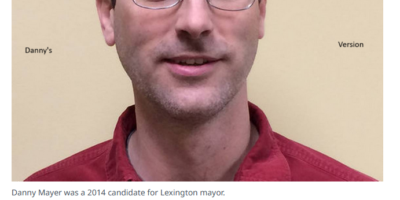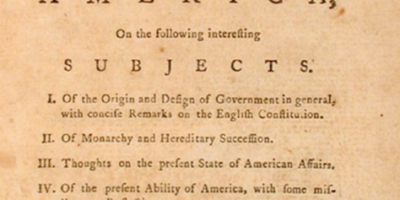Harlan and Bell radicals
Thanks so much for enlightening me of the strife felt in the early twentieth century and the radicalism shown by those in Harlan and Bell counties (“Mine strikes and commie songs,” Feb 2012). I spent, all told, about two years working on reclamation sites (this was the mid-80′s when there was money available for reclamation) and was run off by one landowner after the other. I was mistaken many times as a coal operator “goon” sent there to destroy even more of the land and water. When the opposite was true.
Today it’s Blair mountain, tomorrow the whole eastern part of our state (Kentucky) and the southwestern portion of West Virginia will be flattened.
I once did a site in Pike county that had only one point of reference, that being a survey control point saved by the coal company for future work. The rest of the land was flattened and had taken on the look of a moonscape. The maps I had showed no resemblance to the devastation created by the surface mining. I spent many days around Evarts, and the forks of the Upper Cumberland river, including Poor fork.
Man, I love reading this stuff. Keep it coming. You have my e-mail address.
Norman E. Goldie, Jr.
Mount sterling, KY
The Transit Center
A couple of points about the Transit Center (“Relocations, roundabouts and right-of-ways,” July 2012). The relocation was a small part Mayor Jim Newberry’s attempt to grab stimulus money; there were many things on the list that were not thought through. I imagine transit was something the Feds wanted to see on the application. For all we know they might have been thinking about adding a second level to the building and moving it up (which in my view is a good idea, as it puts the pedestrians on the MLK bridge instead of darting across Vine). Also, of the towers over the Transit Center, are you speaking of the 1985 plan that like Center Pointe lost funding? The foundations of the Transit Center are made to support a 22 story building and still could be built, though unlikely any time soon.
Eliot
Taxes and public ed
A couple generations ago, the “public” in public school, public park, or public swimming pool was a mark of pride. A public institution or edifice was created by and for a community in a deliberate effort to build a materially secure, culturally rich, and generally decent common life. Now “public” in public school means “second rate,” “the best you can do if you can’t afford ‘private,’” “the leavings.”
Public institutions support public virtue, and their breakdown leads to…well, just take a look around. It is only July, but we are already hearing the tried-and-true trump card of the political challenger: “Are you better off now than you were four years ago?” I appreciate this kind inquiry after the health of my bank account, but am more concerned about the health of my neighborhood, city, country, and on up. And, like Beth (“Raise my taxes for public education,” July 2012), I have my education to thank for this perspective on the world.
It was nice to hear the shout out for two teachers whose good work is passed on in Dr. Beth’s classroom. Thanks, Dr. Barbour and Ms. Alhand.
Steven Mangine
Fabled canelands
I suggest Warren Byrom be drafted into the slack water paddle venturist legion just so he can perform nightly tributes to the KY river watershed. This (“Those fabled canelands,” Oct 26, 2011) is just fantastic.
W. Houp
Correction
The company “Stantec” was mis-identifed in last month’s article, “Relocations, roundabouts and right-of ways.” Additionally, the article mis-identifed the downtown Board of Adjustment as denying a permit for CVS to build. As the Lexington Streetseeper pointed out, the Board approved CVS designs in July 2010, but the cost of moving underground junction boxes scuttled the project. We regret the confusion.




Leave a Reply